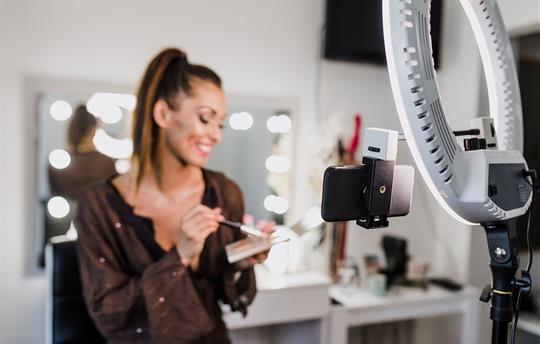How Brands Can Stand Out in Today’s Beauty Market
7/27/2023 Matthew Tilley

Today’s consumer has a short attention span, which makes it challenging when striving to stand out in an overcrowded market. One prime example of this is the cosmetics industry, which is growing significantly and shows no signs of slowing down.
How to propel your brand to the top of this jam-packed market? Two primary catalysts should be clear messaging and a return to simplicity, suggests Kevin Shapiro, Senior Vice President of U.S. Marketing for Consumer Beauty at Coty.
In this Business to Human podcast, Shapiro — who has experienced great success by following the trends in the market and then positioning brands to remain at the top — discusses:
-
Undefining beauty — the new consumer’s mindset
-
How to shine in an already vibrant market
-
Inclusivity and diversity as superpowers
Undefining beauty and the new consumer mindset
When Shapiro looks back at his journey in the beauty industry, he realizes that almost nothing is the same as it was when he first started. He highlights these three significant changes:
The way beauty is sold has changed tremendously through the evolution of the retail space. Beauty has been reinvented by retailers, and the emphasis on beauty products is now at an all-time high. The beauty e-commerce space also has seen major growth, with some beauty brands being sold exclusively online as consumer shopping habits become more and more digital.
Within the digital space, beauty has taken over social media with new platforms constantly emerging and various beauty influencers gaining an immense number of followers. Shapiro says that some of the core social-media platforms of today’s beauty industry didn’t even exist when he began his career.
Sustainability also has entered the beauty space, with more and more brands now focusing on being environmentally conscious — as consumers become increasingly aware of the environmental effects of their purchased product.
In addition, consumers have changed the way they think about beauty, says Shapiro. Beauty has become less a necessity and more an opportunity for consumers to delight themselves with a new product that encourages self-care, he says. There’s an emphasis on wellness and self-expression and it has changed the way people shop.
“A lot of people now spend time thinking ‘What are the things that I want for myself?’ That connection with beauty and self-care and wellness became a lot more intrinsic.”
When someone is out shopping for beauty products, they’re rewarding themselves. It’s a moment of excitement to find a new fragrance or your favorite mascara to make you feel more like you.
How to shine in an already vibrant market
The beauty space today is highly saturated with big names as well as micro-influencers now having equal opportunities to be seen. In order for a company to stand out, says Shapiro, there are a few things to consider:
-
Make sure your product is on a consumer’s radar — whether it’s through a social-media ad they saw earlier in the week, a makeup tutorial from their favorite beauty influencer, or an in-store display that entices them.
“It’s less about creating moments in and of ourselves, and more about being part of moments that consumers are talking about and aligning to their routines and what they’re conscious about,” says Shapiro.
Leveraging different voices and faces
Representation is one of the most important parts of a brand’s success, no matter the industry. If your consumer doesn’t “see” themselves in your brand, they’re unlikely to feel a connection or urge to support it.
This is especially true when it comes to beauty brands — since faces are quite literally the advertising strategy for just about every product. All races, genders, and sexualities need to be showcased in your brand’s image so that consumers of all walks can picture themselves using your products.
“What is most important is figuring out when to leverage those different voices and faces so that we’re consistently showing up to the consumer in diverse ways, and there’s not only the same face over and over or only one angle,” says Shapiro.
Diversity and inclusion have been well-known controversies in many beauty conversations, particularly as the market becomes a more and more diverse space. Make sure your marketing team is part of the positive change and is constantly raising the bar to be a brand that’s accessible to and representative of all.
Want to learn more about marketing in the beauty space and how consumers are shopping for their next favorite product? Listen on Apple Podcasts, Spotify or wherever you find your podcasts.